Table of contents
Khorasan wheat or kamut ( Triticum turgidum ssp. turanicum) is one of the oldest cultivated grains. This undemanding 'ancient wheat' is particularly popular in organic farming.
Use in the kitchen
Khorasan wheat (Kamut or Balady Durum) is becoming increasingly popular because it is not as over-bred as wheat. The individual grain is almost twice as large as the normal wheat grain and is a little more yellow. The taste is mild and slightly nutty. The wheat tastes sweet, which is why it is also called sweet wheat.
How can you prepare Kamut? The raw Kamut grains are used in a similar way to spelt or wheat. Pressed into flakes (Kamut flakes) or soaked overnight, Kamut also tastes good in muesli or porridge. If you let the Kamut grains germinate for 2 to 4 days, the sprouts taste good raw in salads with avocado, tomatoes, rocket, onion and a raw, oil-free salad dressing. Sprouted Kamut can also be used as a topping for stews or soups, or it can be processed into muesli bars or unbaked "bread". You can find more information on the subject of germination in the article Phytic acid or phytate and soaking and germination.
Cooked Khorasan wheat is used, similar to couscous and bulgur, as a filling side dish with vegetables. Kamut is a great alternative to wholegrain rice.
Due to its good gluten properties, flour made from khorasan wheat is suitable for baking bread, fruit bread, plaited bread, muffins or other cakes and pies. Various types of kamut pasta are made from the flour or kamut semolina. Also available is 'Green Kamut', a wheatgrass powder that can be used for smoothies and shakes.
Vegan recipe for Kamut vegetable pot
Ingredients (for 4 people): 200 g Kamut, 1 teaspoon rapeseed oil, 4 carrots, 4 spring onions, 8 tomatoes, one to two sprigs each of rosemary, thyme and marjoram (alternatively spice mix Herbs of Provence), salt,black pepper.
Preparation: Soak the Kamut overnight in twice the amount of water with the herbs (on the stems). Wash and chop the carrots, spring onions and tomatoes. Put the rapeseed oil, carrots and spring onions in a pot and sauté. Rinse the Kamut well and add to the stew with a little water, together with the chopped tomatoes and chopped herbs. Simmer at medium heat for about 30 to 40 minutes. Season with salt and pepper.
Vegan recipes with Kamut can be found under the note: " Recipes that have the most of this ingredient ".
| Not only vegans or vegetarians should read this: Vegans often eat unhealthily. Avoidable nutritional errors. |
Purchasing - Storage
Kamut wheat is usually not found in the range at major retailers such as Coop, Migros, Rewe, Edeka, Hofer, Volg, Spar, Aldi, Lidl and Billa (as of 2023). Kamut is occasionally available in organic supermarkets such as Denn's Biomarkt and Alnatura, and health food stores and online shops definitely offer Kamut or Khorasan wheat in organic quality. In addition to the whole grains, Khorasan semolina (Kamut semolina), Kamut flour and pasta made from Khorasan flour are also available in stores. Although imports from the USA and Canada predominate, you can increasingly find products from Europe. Due to its good storage properties, Kamut is in stock all year round (season).
The availability of Khorasan wheat (Kamut) varies depending on the size of the store, catchment area, etc. If you are interested, click on our recorded food prices for the DA-CH countries (above under the ingredient image). There you will find current prices from various supermarkets and their price development.
Storage tips
The whole, crushed or ground grains should be stored, like other grains or rice, in a dry, cool place and protected from light. The optimal storage temperature is 15 °C. If no pests come along, they will last for at least a year. 17
Ingredients - Nutritional values - Calories
100 g of raw Khorasan wheat (organic) consists of 71 g of carbohydrates and has an energy content of 337 kcal. With 11 g of fiber, it is very filling and has a low fat content (2.1 g). The 15 g of protein contained in Khorasan wheat can be compared with the content of spelt (15 g) and the pseudocereal amaranth (14 g). 1
Raw Kamut (organic) is rich in selenium. The 82 µg/100g it contains covers 148% of the daily requirement. Wheat products such as wheat germ (79 µg/100g), wholemeal spaghetti (78 µg/100g), couscous (66 µg/100g) or wheat flour (62 µg/100g) have a relatively high selenium content. Brazil nuts (from Bolivia) contain even more selenium with 1917 µg/100g, 2-3 of which cover the daily requirement. 1
The manganese content is also quite high at 2.7 mg/100g and covers around 137% of the daily requirement. This is comparable to chia seeds, spelt, bulgur and amaranth. Teff (dwarf millet) contains a lot of manganese at 9.2 mg/100g. This corresponds to 462% of the daily requirement. 1
Kamut has 364 mg/100g of phosphorus, which corresponds to 52% of the daily requirement. Oat flakes (410 mg/100g) and green spelt grains (411 mg/100g) have similar values.Dried pumpkin seeds (1233 mg/100g) and chia seeds (860 mg/100g) contain a lot of phosphorus. 1 Since phosphorus is contained in the form of phosphoric acid in soft drinks and phosphate additives in ready-made products, consuming these often results in too much of this element rather than too little.
Khorasan wheat also contains small amounts of thiamine (vitamin B1), niacin (vitamin B3) and vitamin B6. 1
You can find all the ingredients of Kamut, the coverage of the daily requirement and comparison values with other ingredients in our nutrient tables. In the article Nutrients explained you will get a detailed insight into the topic.
Health effects
Is Kamut healthy? Ancient grains (Khorasan wheat, barley, spelt/spelt, rye, millet and oats) and pseudograins (amaranth, quinoa and buckwheat) are considered healthy because they are usually eaten whole. Therefore, they have higher levels of healthy nutrients than refined grains. 2 The whole grain of Kamut contains a lot of fiber, which has a variety of health-promoting effects. In addition to a positive effect on the digestive system 12 and cardiovascular health, 13 a high-fiber diet leads to a feeling of satiety for longer, which can help with weight loss. 14
Replacing wheat products with kamut leads specifically to a reduction in total cholesterol, LDL cholesterol and blood sugar, both in healthy individuals 3 and in patients with type 2 diabetes 4. However, the studies were only carried out with a small number of study participants and a verification of the results in a clinical study is still pending.
Compared to soft wheat, Kamut has higher values for eight out of nine minerals, contains up to 65% more essential amino acids and has more lipids and fatty acids. The protein content can be up to 40% higher than the average value of soft wheat. 10 Kamut contains higher concentrations of phenolic compounds and carotenoids than soft wheat. These are secondary plant substances and have antioxidant and anti-carcinogenic properties. 2
Dangers - Intolerances - Side effects
Does Kamut contain gluten? Like all types of wheat, Khorasan wheat contains gluten and gliadin (gluten protein). It is therefore not tolerated by people with celiac disease (CD). 2,5,6 There is some evidence that people with gluten sensitivity (non-celiac gluten sensitivity NCGS) tolerate Kamut better than soft wheat. Reference is made to in vitro studies with T cells and extracted gluten peptides, which show that the T cells sometimes react less strongly to extracts from old wheat varieties than to extracts from more modern wheat varieties. 7,8 However, there are also studies that prove the opposite. 5 Khorasan wheat is therefore not an alternative for people with gluten sensitivity. Breeding institutes have set themselves the goal of bringing new wheat varieties with fewer gluten proteins onto the market. 8
Ecological footprint - animal welfare
Old grain varieties, such as Khorasan wheat, often have greater diversity in their crops, which makes them more resistant to climate fluctuations and diseases. Modern soft wheat ( Triticum aestivum) and durum wheat ( Triticum durum), on the other hand, are often homogeneous varieties that are the result of intensive breeding programs and, in some cases, genetic engineering. This makes them more productive, but also more susceptible to diseases, pests and climate change. 2
Kamut has a CO 2 footprint of 1.15 kg CO 2 eq/kg, wheat has 0.84 kg CO 2 eq/kg. 19 We do not have specific figures on the amount of water needed to produce Khorasan wheat. Therefore, we show the values for other types of grain such as wheat (1827 l/kg). To produce 1 kg of rye, 1544 l of water is needed, and 1 kg of oats 1788 l. 20
A 2008 study on the greenhouse effect of conventional and organic farming shows that the production of 1 kg of organic grain results in around 60% fewer greenhouse gas emissions than a conventional product. 18 Khorasan wheat or Kamut is mainly grown as organic grain. To avoid long transport routes, regional products should be preferred.
A complete conversion of all agricultural land to organic farming could reduce emissions by 15-20%. However, this would require 60% more land for the same production volume, which is not possible in Europe, for example. In order to implement an organic conversion on the available land, a reduction in meat and milk production of 70% is necessary. The majority of arable land is needed for growing animal feed (71% of greenhouse gas emissions from agriculture). If conventional agriculture reduces the use of mineral fertilizers, this could also save some greenhouse gases. 18
Worldwide occurrence - cultivation
Modern DNA analyses show that Khorasan wheat ( Triticum turgidum ssp. turanicum) is a natural hybrid between durum wheat ( Triticum durum) and a wild form of wheat ( Triticum polonicum) that occurred in the Fertile Crescent (Turkey, Iran, Iraq, Israel, Azerbaijan). 9 It is believed to have originated in the Iranian province of Khorasan, which is where the name "Khorasan wheat" comes from. Khorasan wheat is one of the oldest cultivated types of grain and has been cultivated for around 6,000 years. 21
In 1990, a producer in the USA registered the ancient Egyptian word Kamut (= "soul of the earth") as a trademark for organic Khorasan wheat cultivation. The trademark guarantees certain properties in terms of protein and selenium content, as well as several quality specifications related to the cultivation conditions. For example, the grain must always come from controlled organic cultivation and must not be hybridized or genetically modified. 2,11 Regarding Kamut wheat , Kamut International Ltd. writes of its Egyptian origins. The story goes that the first grains that a US pilot sent to his father in America came from an ancient Egyptian grave. This is why Kamut is also called "King Tut wheat". 11 However, there is no evidence of this.
The trademarked Kamut wheat is grown mainly in North America and partly in Australia. There are cultivation experiments in Austria, where it is called "Pharaoh's grain". 22
Cultivation - Harvest
Khorasan wheat needs good, warm locations with well-ventilated soil. It is sensitive to cold and waterlogging. The yield of organically produced Khorasan wheat is between 1.2 t/ha and a maximum of 2.6 t/ha. It is very robust against pests and diseases and requires little fertilizer. 15 The cultivation of organic winter soft wheat brings slightly higher yields at 3-5 t/ha. 16 A license 15 is required for cultivation under the name Kamut and organic production is mandatory. 11
Further information
Khorasan wheat ( Triticum turgidum ssp. turanicum) is a tetraploid wheat subspecies, which means that its general biological properties are similar to those of durum wheat ( Triticum durum). Botanically, kamut, like all cereals, belongs to the grass family ( Poaceae). The grains are like nuts, single-seeded indehiscent fruits. The ears of khorasan wheat have long, black awns.
Alternative names
Khorasan wheat is known by its brand name Kamut, as well as King Tut wheat, Oriental wheat or Balady Durum (modern Egyptian name for Khorasan wheat). In English it is known as khorasan wheat, oriental wheat or Kamut. The spellings Khorosan or Chorosan are incorrect.
Bibliography - 22 Sources
| 1. | USDA United States Department of Agriculture. |
| 2. | Bordoni A, Danesi F, Di Nunzio M, Taccari A, Valli V. Ancient wheat and health: a legend or the reality? A review on KAMUT khorasan wheat. Int J Food Sci Nutr. 2017 May;68(3): 278-286. |
| 3. | Sofi F, Whittaker A, Cesari F, Gori AM, Fiorillo C, Becatti M, Marotti I, Dinelli G, Casini A, Abbate R, Gensini GF, Benedettelli S. Characterization of Khorasan wheat (Kamut) and impact of a replacement diet on cardiovascular risk factors: cross-over dietary intervention study. Eur J Clin Nutr. 2013 Feb;67(2): 190-5. |
| 4. | Whittaker A, Dinu M, Cesari F, Gori AM, Fiorillo C, Becatti M, Casini A, Marcucci R, Benedettelli S, Sofi F. A khorasan wheat-based replacement diet improves risk profile of patients with type 2 diabetes mellitus (T2DM): a randomized crossover trial. Eur J Nutr. 2017 Apr;56(3): 1191-1200. |
| 5. | Colomba MS, Gregorini A. Are ancient durum wheats less toxic to celiac patients? A study of α-gliadin from Graziella Ra and Kamut. Scientific World Journal. 2012;2012: 837416. |
| 6. | Brouns F, Geisslitz S, Guzman C, Ikeda TM, Arzani A, Latella G, Simsek S, Colomba M, Gregorini A, Zevallos V, Lullien-Pellerin V, Jonkers D, Shewry PR. Do ancient wheats contain less gluten than modern bread wheat, in favour of better health? Nutr Bull. 2022 Jun;47(2): 157-167. |
| 7. | Molberg O, Uhlen AK, Jensen T, Flaete NS, Fleckenstein B,Arentz-Hansen H, Raki M, Lundin KE, Sollid LM. Mapping of gluten T-cell epitopes in the bread wheat ancestors: implications for celiac disease. Gastroenterology 2005 Feb;128(2): 393–401. |
| 8. | Spaenij-Dekking L, Kooy-Winkelaar Y, van Veelen P,Drijfhout JW, Jonker H, van Soest L, Smulders MJ, BoschD, Gilissen LJ, Koning F. Natural variation in toxicity of wheat: potential for selection of nontoxic varietiesfor celiac disease patients. Gastroenterology 2005 Sept;129(3): 797–806. |
| 9. | Khlestkina EK, Röder MS, Grausgruber H, Börner A. A DNA fingerprinting-based taxonomic allocation of Kamut wheat. Plant Genetic Resources. 2006 Dec;4(3): 172-180. |
| 10. | Békés F, Schönlechner R, Tömösközi S, Chapter 14 – Ancient Wheats and Pseudocereals for Possible use in Cereal-Grain Dietary Intolerances, In: Wrigley C, Batey I, Mskelly D, cereal Grains (Second Edition), Woodhead Publishing Series in Food Science, Technology and Nutrition. Woodhead Publishing, 2017: 353-389. |
| 11. | Kamut Brand wheat. Kamut International Ltd & Kamut Enterprises of Europe bv. 2023. |
| 12. | Gill SK, Rossi M, Bajka B, Whelan K. Dietary fibre in gastrointestinal health and disease. Nat Rev Gastroenterol Hepatol. 2021 Feb;18(2): 101-116. |
| 13. | Evans CEL. Dietary fibre and cardiovascular health: a review of current evidence and policy. Proc Nutr Soc. Februar 2020;79(1): 61–7. |
| 14. | Miketinas DC, Bray GA, Beyl RA, Ryan DH, Sacks FM, Champagne CM. Fiber intake predicts weight loss and dietary adherence in adults consuming calorie-restricted diets: the pounds lost (Preventing overweight using novel dietary strategies) study. J Nutr. 1. Oktober 2019;149(10): 1742–8. |
| 15. | Landwirtschaftskammer Oberösterreich. Bio Khorasanweizen (Triticum turgidum x polonicum). |
| 16. | Landwirtschaftskammer Oberösterreich. Bio-Winterweichweizen (Triticum). |
| 17. | Bundeszentrum für Ernährung. Lebensmittellagerung im Haushalt (PDF). |
| 18. | Foodwatch. Klimaretter Bio? Der foodwatch-Report über den Treibhauseffekt von konventioneller und ökologischer Landwirtschaft in Deutschland. 2008. |
| 19. | CONCITO. The Big Climate Database, version 1. 2021.
|
| 20. | Mekonnen MM, Hoekstra AY. The green, blue and grey water footprint of crops and derived crop products. Hydrol. Earth Syst. Sci. 2011; 15: 1577-1600. |
| 21. | Jankovic S, Popovic V, Rakic S, et al. Influence of nutrition on productivity and chemical composition of khorasan wheat - Triticum turgidum l. ssp. turanicum jakubz. AgricultForest. 2020;66(4). |
| 22. | Grausgruber H, Sailer C, Ruckenbauer P. Khorasan wheat, Kamut® and ‘Pharaonenkorn’: Origin, characteristics and potential. Bericht über die 55. Tagung der Vereinigung der Pflanzenzüchter und Saatgutkaufleute Österreichs HBLFA Raumberg - Gumpenstein. 2004. |

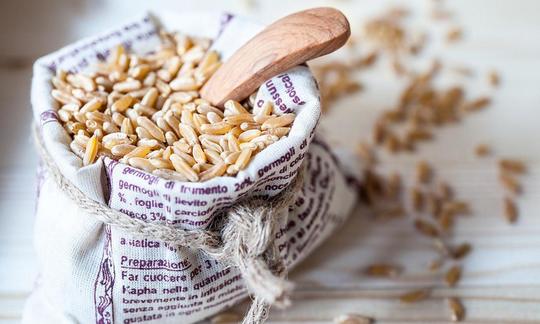

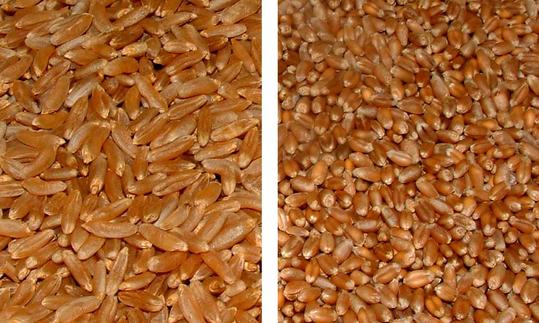

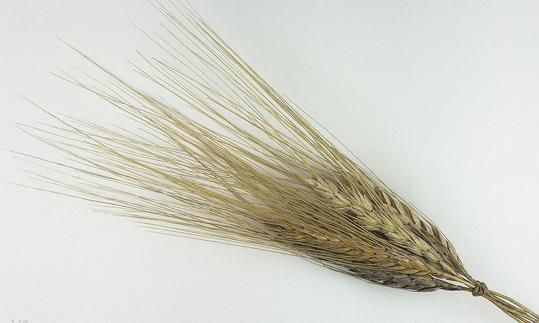

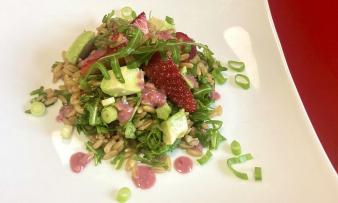
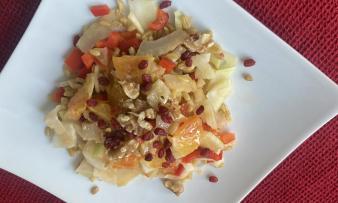
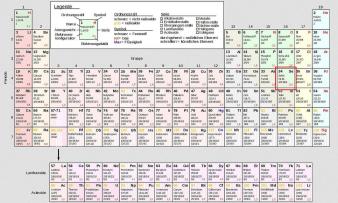

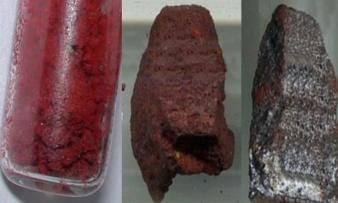


Comments